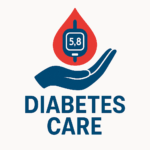
Managing diabetes has evolved beyond just avoiding sugar and carbs. My research led me to learn about glycemic index (GI), a system that ranks how fast different foods raise blood sugar. This is a powerful tool in making smarter food choices. Combined with the power of Continuous Glucose Monitoring (CGM), GI awareness is reshaping how I approach my diet.
What Is the Glycemic Index?
The glycemic index ranks carbohydrates on a scale from 0 to 100 based on how quickly they raise blood glucose levels after eating:
- Low GI (≤55): Slowly digested, gradual blood sugar rise (e.g., lentils, meat and fish)
- Medium GI (56–69): Moderate impact (e.g., brown rice, whole wheat bread)
- High GI (≥70): Rapid blood sugar spike (e.g., white bread, cornflakes, soda)
Foods with a low GI are ideal for diabetes management because they help maintain steady glucose levels and reduce the risk of spikes and crashes.
Why Glycemic Index Awareness Matters for Diabetes
Understanding the glycemic index empowers people with diabetes to:
- Choose better carbs for blood sugar stability
- Prevent post-meal spikes, which reduce insulin stress
- Improve A1C over time
- Encourages long term dietary shifts leading to better weight management and higher energy levels
Once I learnt about GI, I was able to easily fine tune my diet by avoiding foods that spike blood sugar faster. This lead to well informed healthier, long-term eating habits. Learn more about GI here.
Enter CGM: Real-Time Feedback on GI Food Choices
While GI charts are helpful, they’re not personalized. That’s where CGM technology comes in. CGM sensors continuously track your blood glucose throughout the day. They give real-time feedback that helps you see exactly how your body responds to different foods, especially those with high GI values. I was able to fine tune my food choices by seeing how my blood glucose levels responded to various foods. Here is how CGM enhanced diet planning helped me:
- Instant feedback: After eating a high-GI snack, I watch my glucose spike within 30–60 minutes
- Reinforce low GI choices: See flatter glucose curves when I eat beans, barley, or apples
- Test variations: Discover how pairing high GI carbs with protein, fat, or fiber flattens the spike
- Learn personalized GI effects: Not all bodies react the same way, CGM helps customize my approach
Real-Life Example: GI and CGM in Action
For breakfast I used to eat 2 slices of white bread (high GI) with jam and butter. My CGM showed a rapid spike to over 200 mg/dL within 45 minutes. I switched to 1 Keto bread slice with a sunny side egg. My glucose spike flattened to under 130 mg/dL within 45 minutes, a major improvement.
This kind of real-time learning empowers me to make smarter, sustainable changes. It turns food into feedback, not guesswork.
How I Started Using GI and CGM Together
- Get a CGM sensor – I started with an over the counter option before I got a prescription. I set up the system. For details click here.
- Plan meals – I used the GI index available here to find food alternatives.
- Log and Track glucose response – I tracked glucose response after each meal to determine how different foods impacted my diabetes.
- Experiment – I used the data to fine tune the foods that was more optimal for my diabetes management
- Aim for steady glucose lines, not sharp peaks – I used the CGM apps to view my daily trends and achieve my goals
Over time, I built a personalized GI based diet plan backed by hard data—not just general advice.
Final Takeaway
Glycemic index awareness is a powerful nutritional strategy, which combined with CGM technology, becomes transformative. With smarter food decisions every day and real time glucose monitoring, my lifestyle transformation became much easier and faster. Read more about the RECHARGE transformation here.
Start now: eat smarter, monitor better, and live healthier.
Keywords: glycemic index, diabetes management, CGM, blood glucose control, diet management, low GI foods, real-time glucose monitoring,

